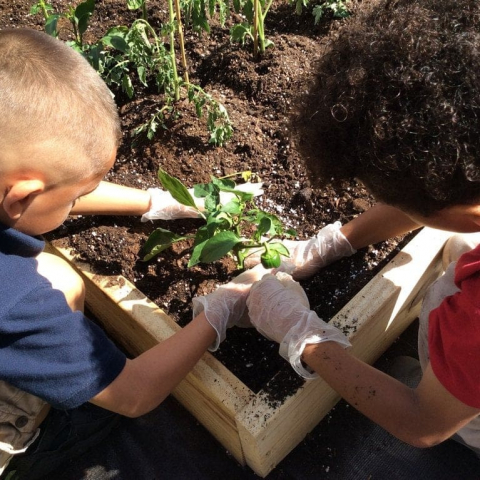New notebooks, sharpened pencils and ice cream socials; all are reminiscent of a new school year.
However, this year, the first day of school will look pretty different for many students, as schools across the country transition to online learning in the face of COVID-19.
Think of the teachers
Our minds quickly turn to the students – the learning experience, their potential loneliness without friends, the possibility that they won’t develop at the rate that is expected of them in a typical school year. But what about the teachers? They’ve had just a few short months to transition their curricula to an entirely new way of learning. That can’t be easy.
The National Agriculture in the Classroom Organization (NAITCO) and the National Center for Agricultural Literacy (NCAL) at Utah State University recognized the stress facing teachers and sought to provide support via free, online lesson plans to educate pre-kindergarten through 12th grade students about agriculture.
Online agriculture education
In March 2020, NAITCO and NCAL launched an eLearning portal, agclassroom.org/eLearning. Through that portal, they made many of the lessons and activities already on NAITCO’s searchable database of resources readily available to educators. The materials are available for teachers to use with whatever learning management system their school employs, from Moodle and Google Classroom to Nearpod and Blackboard.
The eLearning lessons and activities cover plant science, animal science, physical and chemical science involving food, inexpensive tabletop hydroponic gardens, renewable and nonrenewable sources of energy and more. The eLearning platform also includes tutorial videos for topics that require additional instruction, which enable students, parents and educators to follow along easily.
Let’s take a look at some of the great lessons available for students across the age spectrum.
In “Eggology,” Pre-K through second grade students identify how the basic needs of a growing chick are met during incubation by identifying and diagramming the parts of an egg. In “Recycled Seed Paper,” they make paper using recycled materials, as well as seeds that they can plant to discover what seeds need to germinate.
Third through fifth grade students explore soil texture by conducting a test to determine the texture of the soil in their own garden or yard in “Dirt Shake.” And in “Who Grew my Soup,” students identify the sources of the foods they eat and investigate the processes and people involved in their food’s journey from farm to spoon.
Sixth through eighth grade students discover some of the science involved in food production, explore careers in food science and develop an ice cream to represent their school in “Food Scientist for a Day.” And in “Source Search,” students use the interactive Kahoot Challenge to learn how agriculture and natural resources provide nearly all the products on which we rely every day.
Finally, in “Evaluating GMO Perspectives,” ninth through twelfth graders learn about transgenesis, a technology used to genetically modify crops. With a basic knowledge of the technology, students then identify the crops in the United States that have been genetically modified, recognize reasons a farmer might choose to grow a GM crop, and evaluate how social science impacts the implementation of the technology in our food supply. They may also participate in “Journey 2050,” a series of seven lessons during which students explore agricultural sustainability to answer the question, “How will we sustainably feed nearly 10 billion people by the year 2050?”
What some see as a challenge, others see as an opportunity
While the transition to online learning poses many challenges for teachers, students and parents, it is a great opportunity for young people to continue to learn about agriculture. And thanks to NAITCO and NCAL, they can now do that from the comfort of their own homes. Farm Credit is proud to partner with NAITCO to help educate young people about how their food is produced and about the people who produce it.
For more agriculture education resources, visit NAITCO’s blog, AgBytes.
